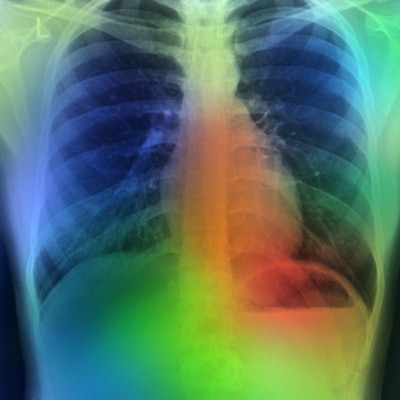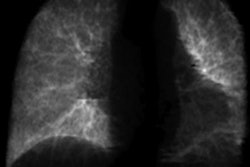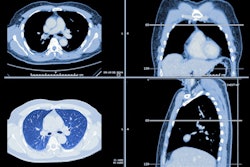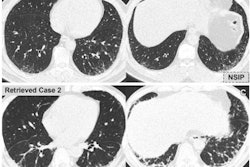
A specialized training program for interpreting thoracic CT images can level the field between expert and nonexpert readers when it comes to diagnosing diffuse parenchymal lung diseases (DPLDs), according to a study published August 22 in Academic Radiology.
The results suggest that the pool of readers for diagnosing these diseases could be expanded with dedicated training, noted a team led by Dr. Ali Dhanaliwala, PhD, of the University of Pennsylvania in Philadelphia.
"The diagnosis of DPLDs is among the most difficult tasks in thoracic radiology," the group wrote. "However, with training, nonexperts can improve their accuracy in diagnosing DPLDs on high-resolution CT and can approach the level of experts in placing the correct diagnosis within a differential."
Diffuse parenchymal lung diseases include such conditions as connective tissue disease-associated interstitial lung disease, idiopathic pulmonary fibrosis, sarcoidosis, hypersensitivity pneumonitis, lymphamgitic carcinomatosis, and micronodular metastasis, to name a few.
Diagnostic workup of these diseases consists of clinical features, lab tests, imaging findings, and sometimes biopsy. But ambiguity of these various types of data can make diagnosis challenging.
"The varied and overlapping imaging appearance of DPLDs, often nonspecific clinical findings, and an overall low prevalence can make diagnosis difficult for nonspecialists," the authors wrote. "Even cardiothoracic trained radiologists only demonstrate moderate interobserver agreement when diagnosing on high-resolution CTs. As a result, DPLDs are often initially missed or misdiagnosed."
To help with interpretation, Dhanaliwala and colleagues developed a training program that consisted of several flowsheet diagrams and an instructional slide deck that included 75 imaging examples. The program outlines a stepwise method for selecting an overall imaging pattern, with flowsheets helping users develop a differential diagnosis based on the imaging pattern.
Dhanaliwala and colleagues then tested the effectiveness of the program in two groups, one that included five experts (that is, cardiothoracic-trained radiologists) and another with 25 nonexperts (radiologists, radiology residents, and pulmonologists). Each group read from a set of 400 CT exams performed to identify diffuse parenchymal lung disease and categorized findings using a top three differential ranking; nonexpert readers then read the images after completing the training program and were asked to categorize the images again.
The training improved the performance of nonexpert readers -- measured by the ability to correctly diagnose disease from the first differential as well as from the top three -- bringing it to a level comparable with the experts, the group found.
| Impact of training program on reader ability to diagnose diffuse parenchymal lung disease on CT | |||
| Differential | Expert reader | Nonexpert reader | |
| Without training | With training | ||
| First differential | 48% | 32.5% | 41.2% |
| Within top three differentials | 64.3% | 49.7% | 65% |
This type of training intervention certainly shows its value with what can be a tricky clinical task, according to the researchers.
"[Use] of a pattern-based teaching algorithm can improve nonexpert interpretation [of DPLDs on CT] and enable nonexperts to include the correct diagnosis within their differential diagnoses at a rate comparable to expert cardiothoracic trained radiologists," they concluded.





















